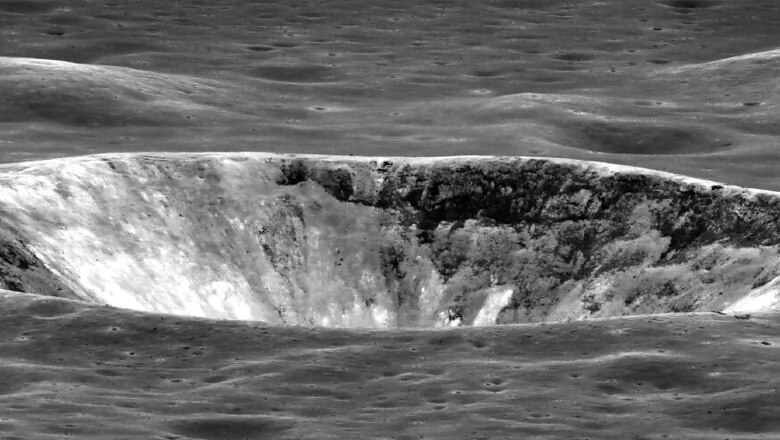
views
Ever wondered why the moon's surface is speckled with so many craters? What exactly is the lunar soil like, and how different is the lunar surface really like, from that of the Earth? While multiple hypotheses have existed over the years, scientists now believe that it was exposure to extremely high temperatures that caused the massive craters that are spread all across the moon's surface. This, in return, was caused due to the impact of massive meteorites crashing into a newly formed moon, close to 4.5 billion years ago.
To understand this, planetary scientists went back to study sample lunar rocks brought back to Earth during the last of the manned Apollo missions to the moon. The key revelation was held in a millimetre-sized grain of the mineral baddeleyite, which contained the presence of zirconia, or zirconium dioxide. The element is typically indicative of once-existent extreme temperatures, thus suggesting that not only does the moon's surface still hold proof of once-existent extreme temperature activity, but also suggest that the impact from these massive meteors spanned hundreds of kilometres on the moon's surface.
These impacts combined with the action of the internal lunar magma to give further definition to the moon's surface, and eventually, these meteor impacts are what created massive crater basins all over the moon's surface, and defined it the way it is seen today. Studies such as these are critical in terms of their impact, since the understanding of extraterrestrial surfaces is a key part in mankind's space aspirations, such as the hunt for proof of life forms outside of Earth, exploring habitability in bodies such as the moon and Mars, and the general understanding of the formation and history of celestial bodies.
Going forward, future manned missions to the moon are expected to play critical roles in making our understanding of our friendly old satellite far better. Over the present decade, mankind is expected to go back to the moon as part of NASA's manned Artemis missions. The following missions are also expected to take us to the Martian surface for the first time, which is also expected to hold key information in understanding celestial activities in the early years of our solar system.




















Comments
0 comment